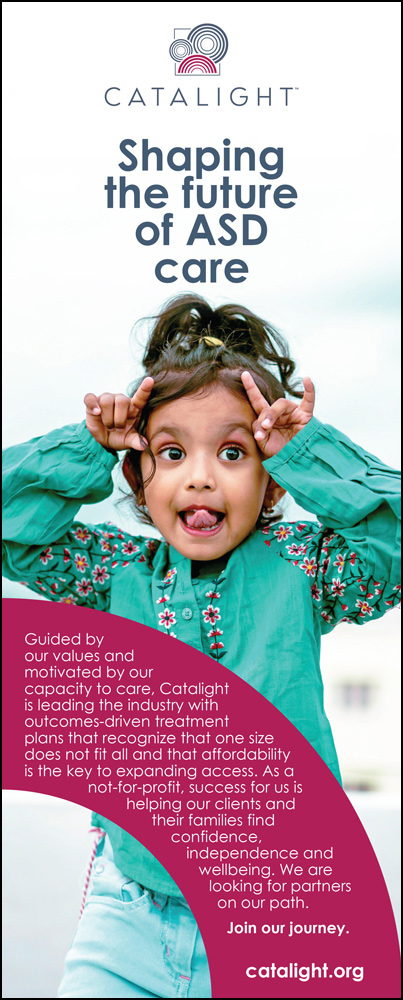When I first began working as a behavioral interventionalist while pursuing my undergrad psychology degree in 1996, we treated children with autism in much the same way many providers do today. Over the past three decades, we’ve learned a great deal about autism. So, why are many still relying on outdated research? As autism prevalence continues to rise and our understanding evolves, our approach to autism care must evolve with it.

There needs to be a change to our approach to providing care – prioritizing the wellbeing of individuals we support and their families.
Using 46 studies published in the past 10 years and our own real-world data, we’ve discovered that, when it comes to autism treatment, there is a lack of evidence for a robust ‘dosage effect’ when looking at interventions based on applied behavior analysis (ABA). That is to say, more hours of care alone doesn’t mean a better result. While some guidelines for ABA call for 30 or more hours of weekly autism treatment, I am happy to report that recent evidence shows children are meeting their goals with far fewer hours and shorter lengths of stay.
Catalight researchers spent a year and a half putting together the Catalight Practice Guidelines and publishing them in March, and it became clear that there were diminishing returns in ABA treatment after 15 hours in most cases. Lower hours resulting in better outcomes are excellent news for clients, families, health insurance payers, and the industry as a whole. At Catalight, we strive to help all in our care to achieve greater wellbeing – that’s our greatest outcome measure.
Recent studies highlight the benefit of parent-mediated care – where a practitioner teaches caregivers ABA methods to use in everyday life. This approach not only improves the care of children with autism but also provides more flexibility and convenience in a natural, everyday setting, making it less intrusive.
Providers who subscribe to the theory that high hour treatment leads to better outcomes often rely on studies conducted more than 15 years ago, including a study published in 1987 that focused on a treatment group of 19 autistic children, of which nine showed positive results.
In contrast, Catalight – with our wide provider network – cares for 17,000 individuals with intellectual and developmental disabilities every day. With such a large census of people, we can gather valuable insights from the data for diagnoses on various complementary autism treatment plans to see how effective they’ve been. It’s rare that we see high hours of ABA as a medical necessity. Catalight’s Vice President of Clinical Excellence, Dr. Lindsey Sneed, published a study following 107 clients in November that showed children made significant progress with just 9 hours of ABA treatment a week.
When research was published in the 80s, autism prevalence was about 1 in every 1,000 – reflecting a homogenous population and similar traits. Today, that number is 1 in 36 with a diverse population and differing needs.
How can we rely on an almost 40-year-old study to address children on the spectrum today, especially with the increase in diagnoses? Comparing the two populations is like comparing apples to oranges. It’s surprising that so many providers overlook recent studies that emphasize the need for greater flexibility and individual care while pointing to dated research that’s questionable in so many areas.
Recognizing recent research, it’s clear that – when caring for such a diverse number of unique individuals – there is no ‘one size fits all’ treatment that can possibly meet the needs of everyone. While there may be a small subpopulation of children who still benefit from high-hour ABA, more are seeing impactful outcomes with additional autism treatment options like parent-mediated care that take into account the full family dynamic. At Catalight, we offer a variety of treatment options and tailored care so that individuals and families can choose what works best for them.
Over the past three decades, autism care has transitioned out of the educational model to a medical one. I can’t think of any medical field that wouldn’t place a higher value on the more recent and more relevant data and research over old methodology. As an industry, we must do better by being more progressive, recognizing the needs of individuals, and focusing on the overall wellbeing of the people and families we serve. The success of outcomes should be measured by the positive impact on lives, not just the number of treatment hours provided.
Tracy Gayeski, PsyD, MBA, is Chief Health Officer at Catalight, a nonprofit that provides access to innovative, individualized care services, clinical research, and advocacy – so people with developmental disabilities can choose their path. Samelson is a licensed clinical psychologist and leads the organization’s behavioral health research team with a focus on promoting the overall wellbeing of families.





